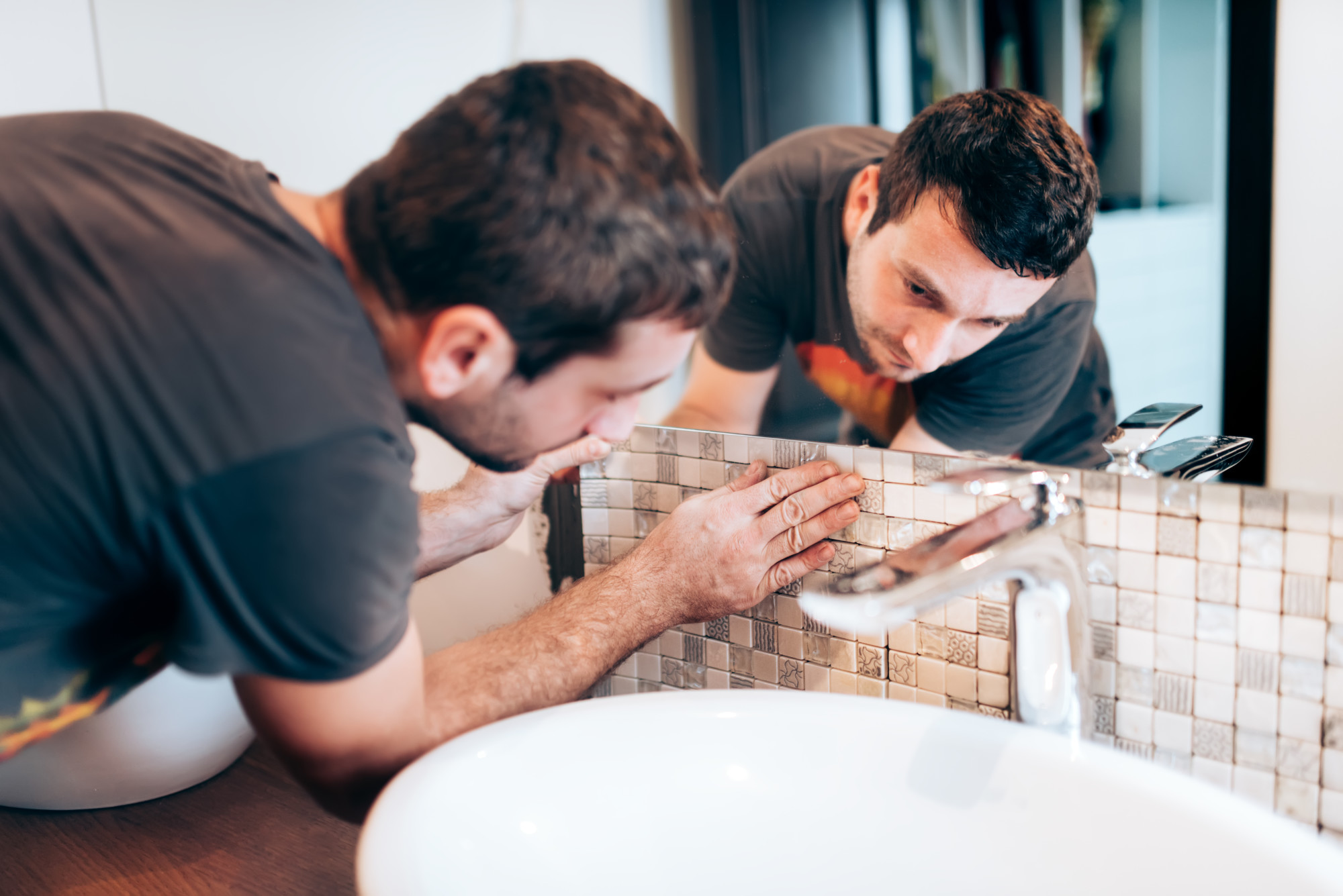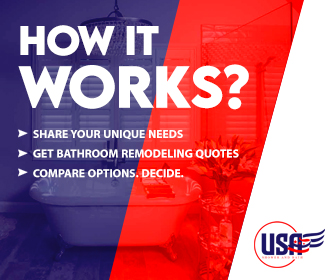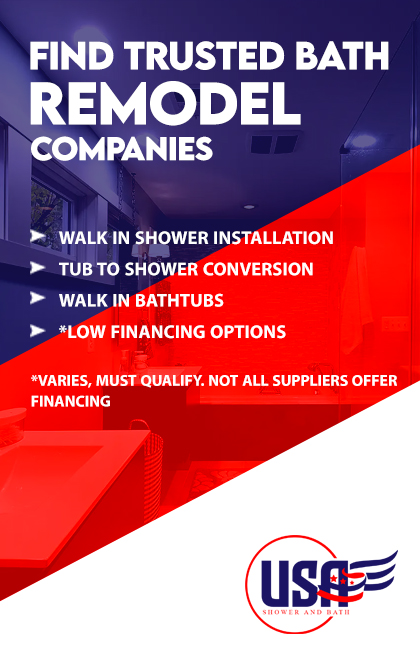
Top 10 Ways to Save Money on Your Bathroom Remodel
Embarking on a bathroom remodel can be thrilling, yet it can also be financially daunting. With the right strategies, however, you can strike a balance between achieving your dream bathroom and not breaking the bank. Here are the top 10 ways to save money on your bathroom makeover without compromising on quality.
1. Plan Ahead
Before you pick up a sledgehammer, take a moment to plan. Outline your objectives and what you aim to achieve with the remodel. Consider hiring a designer or architect for an hour or two of consultation. This initial investment can pay off by ensuring you avoid costly mistakes down the road.
2. Retain the Existing Layout
One of the most significant costs in bathroom remodeling is relocating plumbing. By retaining the current layout of toilet, sink, and shower, you can save considerably on plumbing costs. Focus on updating fixtures rather than moving them.
3. Refurbish Instead of Replacing
Does your bathtub look a tad outdated? Instead of buying a new one, consider refinishing it. The same goes for tiles—reglazing old tiles can make them look brand new. This approach can save you a considerable amount versus replacement.
4. Shop Sales and Clearance
Always be on the lookout for sales. Off-seasons, holidays, or annual clearance sales can be ideal times to grab great deals on bathroom fixtures, tiles, and other materials.

5. Repurpose and Upcycle
Consider using non-traditional items in your bathroom. An old dresser, for instance, can be converted into a unique vanity. With a bit of creativity, you can find various pieces to repurpose, giving your bathroom a unique touch without a hefty price tag.
6. Choose Alternatives to Tile
While tiles are the go-to for bathroom walls, they can be pricey. Consider alternatives like beadboard, reclaimed wood, or even wall panels. These can be equally stylish and often come at a fraction of the cost.
7. Limit Tile Use
If you’re set on tiles, you don’t have to tile the entire bathroom. Instead, consider tiling only high-impact areas like the floor and shower stall walls. For the rest, you can paint or use other materials.
8. Do Some DIY, But Know Your Limits
While hiring professionals can add to the cost, certain tasks, such as plumbing and electrical work, require expert hands. However, you can take on tasks like demolition, painting, or even tiling if you’re comfortable. Just ensure you understand the process and risks involved.
9. Opt for Open Shelving
Cabinets can be one of the pricier elements in a bathroom. Consider open shelves: they can be cost-effective, create a feeling of space, and allow you to display beautiful bathroom accessories and towels.
10. Re-evaluate Your Needs
Do you really need dual sinks? Or a tub and a shower? Prioritize based on your actual needs, not just trends. Sometimes, simplifying your design can lead to savings and a more functional space.
A bathroom remodel doesn’t have to be synonymous with emptying your savings. By being strategic and creative, you can achieve a beautiful, refreshed space that aligns with your budget. With careful planning, smart shopping, and a sprinkle of DIY spirit, your dream bathroom might be closer (and more affordable) than you think.

What is a Realistic Budget for a Bathroom Remodel?
When setting a budget for a bathroom remodel, it’s crucial to have a clear understanding of the costs involved. Each bathroom remodel is unique, but by looking at the average costs of materials, labor, and other elements, you can develop a more informed budget.
Size Matters
The size of your bathroom will significantly influence the overall cost. Naturally, larger bathrooms will require more materials and labor.
- Small Bathroom (up to 40 sq ft): The average cost can range from $3,500 to $7,000.
- Medium Bathroom (40 to 100 sq ft): You might be looking at a range of $7,000 to $15,000.
- Large Bathroom (100 sq ft and more): This could set you back anywhere from $13,000 to $25,000 or more, depending on the luxury fixtures and finishes you choose.
Labor Costs
Labor is one of the most significant expenses in a bathroom remodel. On average, the labor cost for a bathroom remodel can account for about 40-60% of the total project budget. This percentage can translate to:
- Basic Remodel: $1,000 to $3,500
- Mid-range Remodel: $4,500 to $12,000
- Upscale Remodel: $13,000 to $25,000
Note: The above costs vary depending on regional labor rates and the complexity of the job.
Materials and Fixtures
The choice of materials and fixtures can drastically influence your budget. Here’s a breakdown:
- Tiles: Prices vary widely based on the type, from ceramic tiles (around $1-$20 per square foot) to natural stone tiles (which can range from $5 to $50 per square foot).
- Cabinets and Vanities: A standard single-sink vanity can cost between $100 to $1,200, while custom or double-sink varieties might set you back up to $2,500.
- Fixtures: Basic faucets and showerheads can start from $30, but luxury models or brands can easily cost several hundred dollars.
Additional Costs
Some costs might not be immediately obvious:
- Permit Fees: Depending on where you live, you may need a permit to remodel a bathroom, especially if you’re rearranging the layout. Permit costs can vary from $200 to $1,500.
- Unforeseen Problems: Always allocate around 10-15% of your budget for unexpected issues, like mold, outdated plumbing, or structural problems.
Return on Investment
While the initial costs might seem high, a bathroom remodel can offer a return on investment (ROI) of about 60-70%. In some housing markets, a well-executed bathroom remodel can even recoup more than 100% of its cost when you decide to sell.
Setting a realistic budget requires a mix of research, realistic expectations, and a clear vision of what you want to achieve. Always be sure to obtain multiple quotes, scrutinize contracts, and be aware of the potential for unforeseen expenses. With careful planning, you can achieve a beautiful bathroom that’s in line with your financial expectations.

What is the Most Expensive Part of a Bathroom Remodel?
When planning a bathroom remodel, it’s helpful to know where the bulk of your expenses might be concentrated. This not only assists in budgeting but also offers opportunities to cut costs if needed. So, what tends to be the priciest part of a bathroom makeover?
Labor Costs
Labor is often a significant portion of the overall budget. Depending on the complexity of the job, the experience of the contractor, and regional rates, labor can consume anywhere from 40% to 60% of your total budget. If you’re considering a total overhaul of the bathroom, including moving plumbing and electrical points, the labor costs can surge even higher.
Custom Cabinetry and Vanities
While off-the-shelf vanities can be reasonably priced, custom-built cabinetry tailored to your space and preferences can quickly add to the budget. These pieces are often crafted with higher-end materials and finishes, driving up costs.
Luxurious Finishes
High-end finishes, including premium tiles, natural stone countertops, and designer fixtures, can add considerable cost. For instance:
- Natural Stone Tiles: Using materials like marble or travertine can significantly elevate the price compared to standard ceramic or porcelain tiles.
- Designer Fixtures: Top-tier faucets, showerheads, and hardware from designer brands can be pricey but also add a touch of luxury to the bathroom.
- Freestanding Tubs: These statement pieces can be a focal point of a bathroom but often come with a higher price tag compared to built-in alternatives.
Plumbing Adjustments
Significant plumbing changes or upgrades, especially in older homes, can contribute heavily to the project’s overall expense. This includes relocating fixtures, updating old pipes, or installing additional plumbing features.
Structural Changes and Expansions
Making structural alterations, like knocking down walls to expand the bathroom or adding skylights and windows, requires a higher investment. This involves not just material costs but additional labor, potentially specialized, and often permitting fees.
While each bathroom remodel is unique and costs can vary based on individual choices and unforeseen challenges, being aware of the pricier components allows for better financial planning and decision-making. Sometimes, knowing where the significant expenses lie can also inspire creative alternatives or phases to achieve a dream bathroom without breaking the bank.

Common Affordable Materials for Your Bathroom Remodel
When remodeling a bathroom on a budget, making informed decisions about materials can result in considerable savings without compromising on style or functionality. Here are some commonly used, wallet-friendly materials to consider:
Laminate Countertops
Pros: Laminate has come a long way in recent years. Modern laminates can mimic the look of granite, marble, or wood without the hefty price tag. They are also relatively durable and easy to maintain.
Cons: While resistant, laminates can scratch or chip, and unlike stone, they cannot be refinished.
Ceramic and Porcelain Tiles
Pros: Both ceramic and porcelain tiles are versatile and come in an array of styles, colors, and patterns. They offer water resistance and are easy to clean, making them a popular choice for bathroom floors and walls.
Cons: These tiles can be cold to touch, especially in winter, and might require professional installation for a seamless look.
Acrylic or Fiberglass Shower and Tub Units
Pros: These pre-fabricated units are lightweight, easy to install, and often less expensive than custom-tiled shower areas. They are also low maintenance and can be a good solution for quick bathroom upgrades.
Cons: They may not offer the same luxury feel as a custom-tiled shower or a freestanding tub.
Vinyl Flooring
Pros: Vinyl flooring, especially luxury vinyl tiles (LVT), can replicate the appearance of more expensive materials like stone or wood. It is water-resistant, comfortable underfoot, and offers an easy installation process.
Cons: The lifespan of vinyl is generally shorter than that of ceramic tiles or natural stone.
Medium Density Fiberboard (MDF) Vanities
Pros: MDF, an engineered wood product, is often used in affordable vanities. With proper finishes, it can resist bathroom moisture well and can come in various styles and finishes.
Cons: It’s not as durable as solid wood or plywood vanities and can be prone to swelling if exposed to significant moisture.
Prefabricated Vanity Tops
Pros: Ready-made vanity tops in materials like cultured marble or resin-based materials are more affordable than custom fabrications. They come in standard sizes and sometimes include integrated sinks, simplifying the installation.
Cons: Choices might be limited in terms of sizes, colors, and styles compared to custom options.
Making a bathroom feel fresh and updated doesn’t necessarily require top-of-the-line materials. By opting for these affordable alternatives and combining them creatively, you can achieve a stylish and functional bathroom space without straining your budget. Always remember, the key lies in balancing your aesthetic desires with practical needs and financial constraints.

Top 10 Bathroom Remodeling Contractors in 2023
As we navigate through 2023, the demand for high-quality bathroom remodeling contractors continues to rise. Whether you’re looking for luxury renovations or just a simple refresh, it’s crucial to choose a contractor who understands your vision and can execute it to perfection. Below is a list of ten top-rated bathroom remodeling contractors who have garnered attention this year:
1. BathPlanet
With a reputation for swift installations and a vast selection of design options, BathPlanet has become a go-to for those seeking functional yet stylish bathroom renovations.
2. Dream Baths by Kitchen Kraft
Dream Baths offers comprehensive design services, ensuring every detail aligns with the homeowner’s vision. Their use of high-quality materials ensures longevity and elegance.
3. Re-Bath
Re-Bath has been a known name for years and continues to be a trusted choice for many. They specialize in complete bathroom remodels and are known for their transparent pricing.
4. Elite Bathrooms LuxStone of Long Island
For those on the East Coast, Elite Bathrooms has become synonymous with luxury. They’re especially known for their custom showers and expertise with the innovative LuxStone material.
5. Five Star Bath Solutions
With a presence in multiple cities, Five Star Bath Solutions is celebrated for its efficient service, vast design options, and emphasis on accessibility features.
6. Luxury Bath Technologies
As the name suggests, this contractor prides itself on combining opulence with the latest in bathroom technology, ensuring a contemporary and lavish experience.

7. Improveit! Home Remodeling
Offering a wide range of home remodeling services, their bathroom division is particularly lauded for its inventive designs and use of sustainable materials.
8. MaxHome
MaxHome has been consistently highlighted for its exceptional customer service, attention to detail, and guarantee of using premium materials.
9. Matrix Bath Systems
For homeowners who are environmentally conscious, Matrix Bath Systems offers green solutions. Their designs are modern, and they emphasize water conservation and eco-friendly materials.
10. West Shore Home
Completing our list is West Shore Home, a contractor acclaimed for its speedy installations without compromising on quality. Their in-house team ensures consistent results and meticulous finishes.
Selecting the right contractor is crucial for a seamless remodeling experience. While this list is a great starting point, always ensure to do your own research, check reviews, and get multiple quotes before making a decision. Remember that the best fit is not just about price but also about understanding, communication, and shared vision.

Does Remodeling Your Bathroom Increase Home Value?
The bathroom, though sometimes overlooked, plays a significant role in a home’s overall appeal and value. Many potential homebuyers prioritize modern and functional bathrooms when house hunting. So, does a bathroom remodel genuinely add to your property’s worth? The answer is a resounding yes!
Return on Investment (ROI)
While kitchen renovations often steal the spotlight in discussions about increasing home value, bathroom remodels are close behind. On average, homeowners can expect to recoup approximately 60-70% of their investment on a bathroom remodel when they sell their home. This percentage can vary depending on the scale of the remodel and regional real estate trends.
Benefits of Bathroom Remodeling
- Enhanced Aesthetics: The most immediate benefit is the transformation in appearance. A renovated bathroom looks cleaner, more modern, and is often more in line with the homeowner’s style.
- Increased Home Value: As discussed, remodeling can result in a significant ROI, making it a smart investment for those looking to sell their homes in the foreseeable future.
- Improved Functionality: Remodeling allows homeowners to address layout issues, add more storage, or upgrade fixtures, leading to a more functional space.
- Energy Efficiency: Newer fixtures, such as low-flow toilets and LED lighting, can reduce utility costs and are better for the environment.
- Enhanced Safety: Over time, bathrooms can develop mold, loose tiles, or other hazards. Remodeling provides an opportunity to address these issues and ensure a safer environment.
Common Bathroom Modifications to Consider
- Walk-in Showers: Popular for their sleek look and ease of use, walk-in showers are a top choice, especially in master bathrooms.
- Dual Vanities: For shared bathrooms, dual vanities offer convenience and personal space for multiple users.
- Heated Floors: A touch of luxury that many homeowners appreciate, especially in colder climates.
- Improved Lighting: Adequate and layered lighting can significantly improve the ambiance and functionality of the space.
- Freestanding Bathtubs: These can act as a statement piece, elevating the overall aesthetics of the bathroom.
- Eco-friendly Fixtures: Water-saving toilets and faucets not only reduce your ecological footprint but can also save on water bills.
- Smart Features: From mirrors with built-in lighting and defoggers to digital showers, integrating smart tech can add convenience and modernity.
Bathroom remodeling is not just about modernizing a space; it’s an investment in your home’s value and your quality of life. Considering the ROI, the benefits it brings, and the multitude of modification options available, a bathroom makeover is worth serious consideration for any homeowner.

Top Bathroom Remodel Steps You Should Never Skip
Bathroom remodeling is an intricate process that requires careful planning and execution. While homeowners may be eager to jump into the aesthetic aspects of the renovation, it’s crucial to ensure that fundamental steps aren’t overlooked. Here are some of the essential stages in bathroom remodeling that you should never bypass:
1. Initial Planning and Budgeting
Begin by determining what you want to achieve with the remodel. Are you updating the look, improving functionality, or both? Set a realistic budget considering all aspects, from materials to labor costs. This foundation will guide all other decisions.
2. Thorough Inspection
Before making any changes, inspect the current state of your bathroom. Look for signs of mold, water damage, or structural issues. Addressing these at the outset can save headaches and additional costs in the future.
3. Permit Acquisition
Check with local authorities or your homeowner’s association to understand if permits are required for the type of work you’re planning. Ignoring this step can result in hefty fines or redoing work.
4. Waterproofing
The bathroom is a high-moisture area. Proper waterproofing is vital to prevent mold growth, water seepage, and structural damage. Ensure that all areas, especially around the tub or shower, are adequately sealed.
5. Electrical and Plumbing Layouts
Before any walls are closed up, finalize the plumbing and electrical layouts. Consider the placements of outlets, switches, fixtures, and ventilation systems. If unsure, consult professionals to avoid costly mistakes.
6. Ventilation
A well-ventilated bathroom is crucial for preventing mold and maintaining good air quality. Ensure that your ventilation system is effective and complies with local building codes.

7. Choose Quality Fixtures
While it might be tempting to save money with cheaper fixtures, investing in quality items can ensure longevity and better performance, ultimately saving money in the long run.
8. Flooring Installation
Choose flooring that’s both aesthetically pleasing and functional. It should be water-resistant, durable, and safe to walk on when wet. Ceramic tiles, for instance, are a popular choice due to their durability and water-resistant nature.
9. Dry Runs and Testing
Before completing the remodel, test everything. Check the toilet, faucets, and shower to ensure they function correctly. Ensure that there are no leaks and that electrical fixtures are safely and correctly installed.
10. Final Finishing Touches
Once the primary elements are in place, focus on details like caulking, painting, and installing accessories like towel racks or shower curtains. These final touches can elevate the overall appearance and functionality of the space.
By ensuring each of these steps is meticulously followed, homeowners can guarantee their bathroom remodel is both stunning and structurally sound. Proper planning and attention to detail will result in a space that can be enjoyed for years to come.
